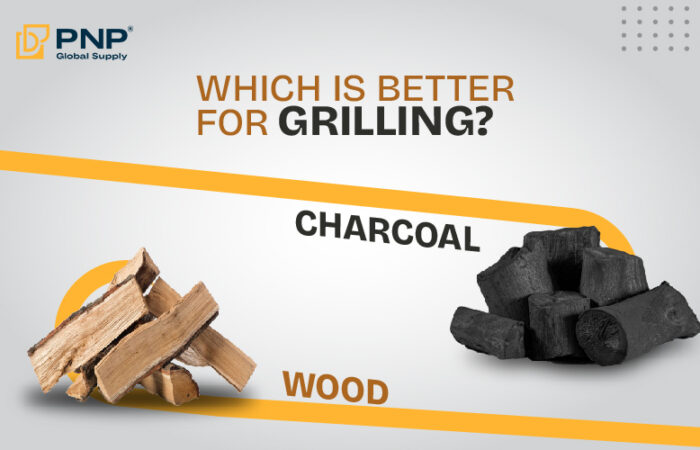Mangrove charcoal, renowned for its superior burning qualities and eco-friendly production, is a sought-after product for various purposes such as grilling, industrial use, and heating. As demand for high-quality charcoal rises globally, import from Vietnam has become an increasingly popular choice. Vietnam, with its rich mangrove forests and decades of expertise in charcoal production, is a top exporter in this market.
This comprehensive guide will provide you with detailed steps and crucial insights into how to import charcoal from Vietnam. Whether you are a business owner or a distributor, understanding the process and leveraging Vietnam’s capabilities will help you achieve success in the global charcoal market.

Why Choose Mangrove Charcoal for Import?
Exceptional Quality and Sustainability
Mangrove charcoal stands out for its high density and excellent heat output. Its unique properties include:
- High Carbon Content: Ensures better heat efficiency and less smoke, making it ideal for a cleaner cooking experience.
- Dense Structure: Mangrove wood’s natural density results in longer burn times, providing a consistent heat source for extended periods.
- Low Ash Residue: Leaves minimal ash, making cleanup easier after use.
Additionally, mangrove charcoal’s production can align with sustainable practices. When sourced from certified producers, it ensures that mangrove forests are managed responsibly to minimize environmental impact.
For businesses seeking to import charcoal, these qualities make mangrove charcoal a top choice for markets demanding both quality and sustainability.
Versatile Applications
Mangrove charcoal’s versatility extends beyond grilling. It is widely used in:
- Restaurants and Catering Services: Known for consistent heat and flavor enhancement in BBQs and grilling.
- Traditional Cooking Methods: Popular in regions where steady heat is essential for preparing meals.
- Industrial Applications: Used in metallurgy, water purification, and as an essential raw material in specific manufacturing industries.
By choosing mangrove charcoal, businesses and individuals can enjoy a product that delivers excellent performance and meets diverse needs. This makes it an ideal choice for those looking to import charcoal for various applications.
Key Factors to Consider When Importing Charcoal
Ensuring Product Quality
When sourcing mangrove charcoal for import from Vietnam, it’s crucial to evaluate its quality. Key parameters include:
- Moisture Content: Low moisture levels ensure minimal sparking and efficient burning.
- Size and Shape Consistency: Charcoal sticks with uniform sizes make handling and usage more efficient, especially for commercial purposes.
- Burn Characteristics: High heat output and long burn times are essential attributes of premium-quality charcoal.
Testing samples before placing bulk orders can help verify these quality aspects and ensure you are receiving the best charcoal for your import charcoal needs.
Learn more about selecting high-quality mangrove charcoal in the article below: How to Choose Quality Mangrove Charcoal
Verifying Supplier Credentials
Selecting the right supplier is critical to a successful charcoal import from Vietnam. Consider the following:
- Reputation and Reliability: Research supplier reviews, certifications, and customer feedback.
- Production Capabilities: Ensure the supplier can meet your quantity and quality demands consistently.
- Export Experience: A supplier familiar with international shipping processes can simplify your import journey.
Understanding Production Standards
Vietnamese producers often adhere to strict production standards to maintain high-quality outputs. Many suppliers hold certifications such as ISO (International Organization for Standardization) or FSC (Forest Stewardship Council), which validate their compliance with sustainability and quality requirements. Request these certifications during your evaluation process to ensure you are working with the right supplier for your charcoal import from Vietnam.
Learn more about the evolution of FSC certification in charcoal production through the following article: The Evolution of FSC Certification in 2025.
Step-by-Step Process to Import Charcoal from Vietnam
Step 1: Determine Your Needs
Clearly define the purpose of your charcoal import. For example:
- What quantity do you need?
- What are your quality specifications (e.g., carbon content, size, moisture levels)?
- Are there any packaging or labeling requirements for your target market?
Identifying these parameters early helps streamline the selection and negotiation process for your charcoal import.
Step 2: Select a Reputable Supplier
Research potential suppliers through online directories, trade shows, or local industry contacts. Once shortlisted, request samples to:
- Evaluate the quality of their charcoal.
- Compare pricing, payment terms, and delivery options.
- Assess supplier responsiveness and communication.
Engaging directly with suppliers through email or virtual meetings can also help build trust and clarify expectations when you plan to import charcoal.

Step 3: Review Documentation and Contracts
Ensure all paperwork is in order before proceeding with your charcoal import. Essential documents include:
- Certificates of Origin: Confirms the product’s Vietnamese origin.
- Export Licenses: Validates the supplier’s authority to export charcoal.
- Detailed Contracts: Specify product quality, quantity, delivery terms, and dispute resolution clauses.
A detailed and clear contract helps protect both parties from potential disputes.

Step 4: Place Your Order
Finalize the order by agreeing on payment and delivery terms. Common options include:
- Payment Methods: Letters of Credit (L/C) or Telegraphic Transfers (T/T) are commonly used.
- Delivery Terms (Incoterms): Decide between FOB (Free on Board) or CIF (Cost, Insurance, and Freight) terms to determine responsibilities for shipping and insurance.

Step 5: Arrange Shipping and Customs Clearance
Work with a freight forwarder to handle shipping logistics. This includes:
- Proper packaging and labeling of the goods.
- Preparing customs paperwork, such as invoices and certificates.
- Arranging insurance for the shipment.
Choose a shipping method (sea freight or air freight) based on your budget and delivery timeline.

Step 6: Inspect and Receive the Goods
When the shipment arrives, inspect the goods for:
- Quality and adherence to specifications.
- Damage during transit.
If issues are identified, document them and communicate with the supplier for resolution.

Customs and Import Regulations for Charcoal
Navigating Import Requirements
Each market has unique regulations for importing charcoal. Be prepared for:
- Customs Duties and Taxes: Research the applicable tariffs and taxes in your destination country.
- Environmental Standards: Ensure compliance with sustainability regulations, especially in markets with strict environmental policies.
- Documentation: Essential documents include invoices, packing lists, and import permits.
Leveraging Expert Assistance
Hiring customs brokers or agents with experience in charcoal imports can simplify the process and help avoid delays or penalties.
Learn more about customs procedures in Vietnam via the following link: VIETNAM CUSTOMS.
Challenges and How to Overcome Them
Common Challenges
- Quality Variations: Inconsistent product quality can lead to customer dissatisfaction.
- Shipping Delays: Logistics disruptions may affect delivery timelines.
- Regulatory Complexities: Navigating unfamiliar import regulations can be challenging.
Effective Solutions
- Pre-Shipment Inspections: Verify product quality before shipment to prevent surprises.
- Reliable Logistics Partners: Partner with experienced freight forwarders.
- Regulatory Expertise: Collaborate with professionals familiar with customs and import procedures.
Benefits of Importing Directly from Vietnam
- Cost Savings
Importing directly from Vietnam eliminates middlemen, reducing costs. Vietnam’s competitive labor and material costs further enhance affordability, making it a cost-effective choice for high-quality products.
- Transparency and Customization
Direct engagement with producers offers greater transparency in the production process. Many suppliers provide customization options to meet specific client needs, such as packaging preferences or product size requirements.
- Strong Export Infrastructure
Vietnam has a well-developed export infrastructure, including major ports and logistics networks. This ensures efficient handling of large-volume shipments and reduces transit times.
Conclusion
Import from Vietnam is an excellent opportunity for businesses seeking high-quality, sustainable, and versatile fuel sources. By following the outlined steps and considering essential factors such as supplier reliability, product quality, and regulatory compliance, you can navigate the import charcoal process with confidence.
Take the first step today by connecting with reputable Vietnamese suppliers and leveraging their expertise to meet your charcoal needs. With proper planning and execution, charcoal import can be a seamless and rewarding experience for your business.
——————————————————————————-
Contact us for more information
Facebook: PNP Charcoal
Instagram: PNP Charcoal
Email: info@pnpglobalsupply.com




